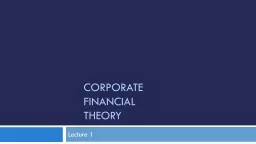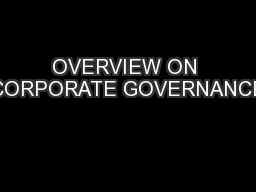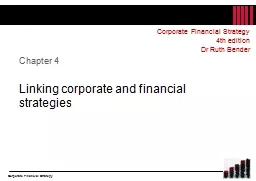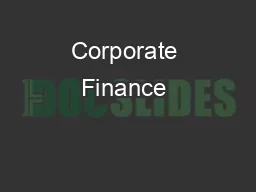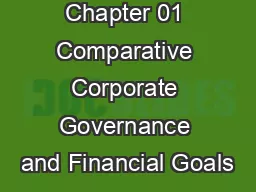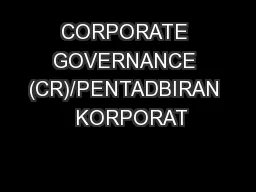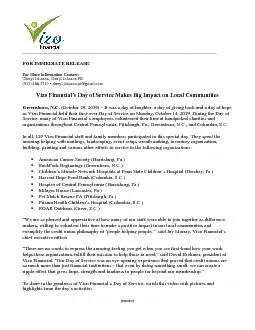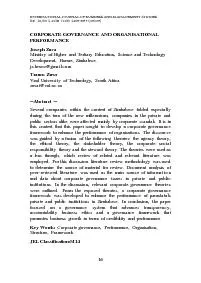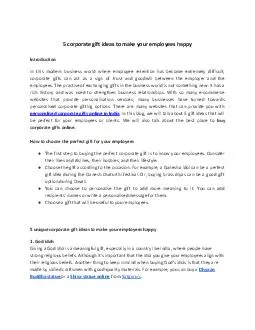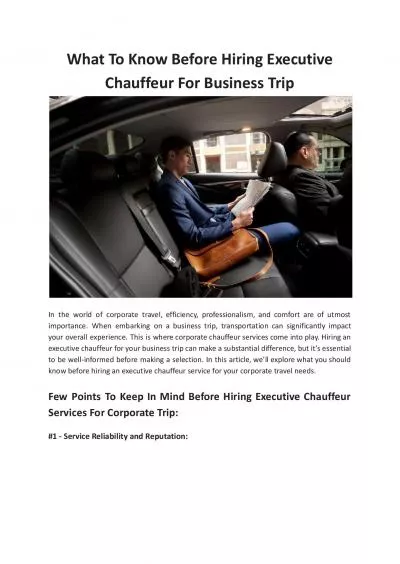PPT-Corporate Financial Theory
Author : tickorekk | Published Date : 2020-08-28
Lecture 1 Corporate Financial Theory Introductions Faculty Students Syllabus amp Website Tests Homework CONNECT Supplements Course Goals Put meanings to words Transform
Presentation Embed Code
Download Presentation
Download Presentation The PPT/PDF document "Corporate Financial Theory" is the property of its rightful owner. Permission is granted to download and print the materials on this website for personal, non-commercial use only, and to display it on your personal computer provided you do not modify the materials and that you retain all copyright notices contained in the materials. By downloading content from our website, you accept the terms of this agreement.
Corporate Financial Theory: Transcript
Download Rules Of Document
"Corporate Financial Theory"The content belongs to its owner. You may download and print it for personal use, without modification, and keep all copyright notices. By downloading, you agree to these terms.
Related Documents

